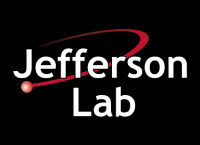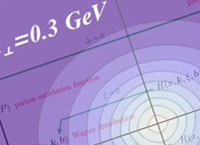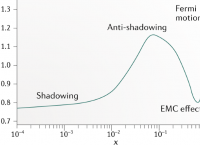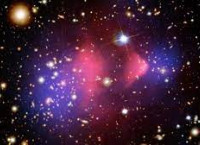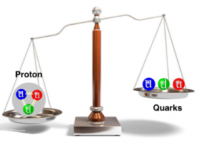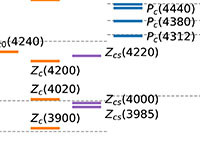We are pleased to announce an upcoming series of summer workshops being organized jointly between the laboratory and the Jefferson Lab Users Organization (JLUO) to probe the science that would be opened up by a higher energy electron beam (~20-24 GeV) at Jefferson Lab. We are particularly interested in identifying key measurements that are not possible to access at 12 GeV, that initially utilize largely existing or already-planned Hall equipment, and that leverage the unique capabilities of luminosity and precision possible at Jefferson Lab in the EIC era.
Organizing Committee:
Ed Brash, JLUO Chair - David Dean - Carlos Munoz Camacho - Thia Keppel - Bob McKeown - Kent Paschke - Jianwei Qiu - Patrizia Rossi - Justin Stevens
June 16 & 17
Marco Battaglieri, Sean Dobbs, Derek Glazier, Alessandro Pilloni, Justin Stevens, Adam Szczepaniak, Patrizia Rossi
Recent observations in heavy-quark spectroscopy have provided numerous candidates for hadronic resonances which are exotic in nature, the so-called XYZ and Pc states. With a CEBAF energy upgrade to 20-24 GeV these states and other charmonia may be studied in photoproduction and electroproduction measurements at JLab. This workshop aims to identify the key measurements made possible by such an upgrade, utilizing recent theoretical models for production and evaluating the detector performance requirements.
July 7 & 8
Harut Avagyan, Carlos Munoz Camacho, Jian-Ping Chen, Xiangdong Ji, Jianwei Qiu, Patrizia Rossi
Studies of azimuthal distributions of hadrons and photons in exclusive and semi-inclusive Deep Inelastic Scattering measurements, providing access to a variety of observables helping to elucidate the way the properties of the proton emerge dynamically from strong interactions, are recognized as key objectives of the JLab 12 GeV program, and driving force behind the construction of the future Electron Ion Collider (EIC). Jefferson Lab 12-GeV data already have remarkably higher precision at large parton fractional momenta x compared to the existing data and will be the main source of information on non-perturbative QCD in next decade. The major limitations in studies of the nucleon structure at JLab12 are the limited coverage of the kinematical region, where the non-perturbative sea is significant, and the limited phase space in accessing large momentum transfer and large transverse momenta of final state particles due to relatively low energy in the photon-nucleon CM system. These issues can be overcome by a JLab upgrade to 24 GeV.
The focus of this workshop will be threefold:
(1) Identify the flagship measurements that can be done only with 20+ GeV. (2) Identify the flagship measurements with 20+ GeV that can extend and improve the 11 GeV measurements, helping the physics interpretation through multidimensional bins in extended kinematics. (3) Identify the measurements with 20+ GeV that can set the bridge between JLab12 and EIC (complementarity)
July 22,23
John Arrington, Mark Dalton, Thia Keppel, Wally Melnitchouk, Jianwei Qiu
An upgrade of CEBAF at Jefferson Lab beyond 20 GeV will open up key science that is not possible to access at 12 GeV. One kinematic regime where this is most possible is in the "middle" Bjorken x regime around x~0.1, where the available momentum transfers at 12 GeV have heretofore limited or prevented several exciting measurements. Here, for example, the long-standing mystery of anti-shadowing may now be probed for the first time in decades. The strange sea may now be measured with minimal theoretical bias using parity-violating electron scattering. More generally, the interplay of the valence and sea regimes may be better disentangled. Novel tagged measurements may provide access to meson structure and the role of mesons in nuclei. All of these measurements leverage the unique capabilities of luminosity and precision possible at Jefferson Lab in the EIC era. This workshop seeks to enhance our knowledge of these topics and broadly identify exciting new science opened up in this middle x regime via experiments that initially utilize largely existing or already-planned Hall equipment.
August 1
Marco Battaglieri, Bob McKeown, Xiaochao Zheng, Patrizia Rossi
Possibilities for testing the Standard Model and searching for new physics beyond the Standard Model enabled by 20-24 GeV electron beams at CEBAF will be discussed. There will be opportunities for presentations and discussions where new ideas can be brought forward.
August 16 & 17 9am - 1pm
Ed Brash, Ian Cloet, Zein-Eddine Meziani, Jianwei Qiu, Patrizia Rossi
Measurements of J/psi near threshold with high statistics, for both electro and photoproduction at JLab with 12 GeV beam, has created tremendous interest in the community. A CEBAF energy increase (to ~24 GeV) will allow us to ask new questions and provide opportunities for addressing long-standing puzzles in nuclear and particle physics, thus enhancing the physics output of all four experimental halls, using existing (Halls B, C, and D) and future (SoLID in Hall A) equipment. This focused one-day workshop aims to (1) identify the key new measurements which could be made possible via an energy increase, and (2) specify the corresponding new questions that could be answered and the outstanding puzzles that could be addressed. For example, what is the impact of Psi(2S) data near and above its threshold in exploring the size change of the probe through a comparison with the threshold J/psi production data? With the enhanced Q lever-arm in J/psi electro-production that comes with higher energy beam, do we expect an improvement in probing the trace anomaly (which is central to the origin of proton mass)? Does having the J/psi produced precisely, especially with 19-20 GeV beam, help to address the tension that currently exists between JLab data and SLAC data from 40 years ago?



